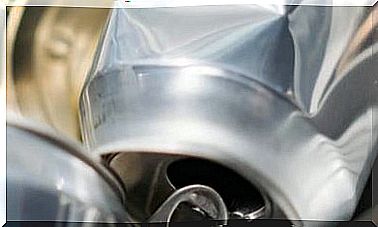This Is Good, Natural And Ecological Cosmetics (and Its Hallmarks)
Cosmetic products made with natural ingredients have enormous benefits for your skin and your health. They are also better for the environment.

We would do well to be as picky about cosmetic products as we are about food. The skin is a sensitive and porous organ that can be attacked or penetrated by artificial chemicals that are part of the composition of conventional cosmetics. The healthy alternative is certified organic or natural cosmetics.
The cosmetics industry has at its disposal some 16,000 chemicals, most of which have been created in laboratories from petroleum derivatives. A good number of these substances are irritants, allergens, potentially carcinogenic, interfere with the hormonal system or are simply not suitable for the nature of the skin.
However, you will have verified that in advertising images of beautiful plants and the words “natural” or “organic” are usually used without being so, because their use is not regulated by law, contrary to what happens with the food.
Differences between natural and ecological
In the absence of legislation, manufacturers of natural and organic cosmetics have promoted the creation of endorsements that guarantee the quality of their products to consumers.
The requirements of the different labels are similar and most distinguish between two categories of products: organic and natural.
In both categories it is mandatory that at least 95% -99% of the volume of the product is natural. The rest can be made up of synthetic ingredients that have no natural alternative and are on a very restricted list.
The difference of the “organic” product (it can also be called “organic” or “biological”) is that 95% of the vegetable ingredients must be organically produced and that these represent at least 20% of the total volume (the rest can be mineral ingredients).
Natural like skin
Both organic and natural cosmetics use substances related to our nature as living beings. For example, vegetable oils are made up of the same fatty acids found in the skin and are much better integrated into the lipid mantle than paraffins, silicones and other petroleum derivatives.
Another example of the difference between a conventional product and a natural one is the type of agents that are used as emulsifiers, essential for the ingredients to mix well.
Conventional cosmetics use petroleum derivatives called polyethylene glycols, which make the skin too permeable and make it more vulnerable. Instead, natural cosmetics turn to soy lecithin or cocoa.
Natural cosmetic products do not contain artificial preservatives or synthetic perfumes. The latter appear in conventional cosmetics with the term “parfum”, but this “parfum” does not refer to a single substance, but to a secret formula – the law allows it – with dozens of ingredients, including endocrine disruptors such as phthalates . On the other hand, natural cosmetics only use essential oils to impart aroma to the product.
Natural cosmetic and hygiene products are preferable and recommended for all people, but especially for those with sensitive skin that cannot bear contact with conventional products, pregnant women, mothers and children.
Although natural cosmetics are much softer than conventional ones, they are not always safe. Some ingredients can be allergenic. For this reason, natural cosmetic manufacturers offer ranges with raw materials selected from among the most tolerable.
Sustainable cosmetic products
The conventional cosmetic industry contributes to oil profitability, ocean and air pollution, and global warming.
Paraffins, for example, interrupt the process of exchange of CO2 for oxygen in the sea, thus contributing to the greenhouse effect, as do the propellant gases of butane or isopropane deodorants.
Other pollutants are microplastics, which seriously disrupt marine ecosystems.
They can be ingredients such as “acrylates copolymer”, “polyethylene”, “polyamid”, “polyurethan”, “polyethylenterephtalat”, “polypropylene” or “polystyrene” (in the INCI nomenclature), which can be found, for example, in exfoliating products. All are prohibited in natural cosmetics.
We also need to avoid chemical protective as oxibenzonas or octinoxatos both health (are endocrine disrupters) and the environment (has been banned in several countries).
Reduce the impact of packaging
Packaging also counts. Ecological and natural certifications require that packaging be minimized and recyclable, but without a doubt the best idea is to refill the packaging, something that some brands are beginning to do.
And it is in the hands of the consumer to choose products that are manufactured closer to home, to avoid the cost and impact of transport and even make some at home.










